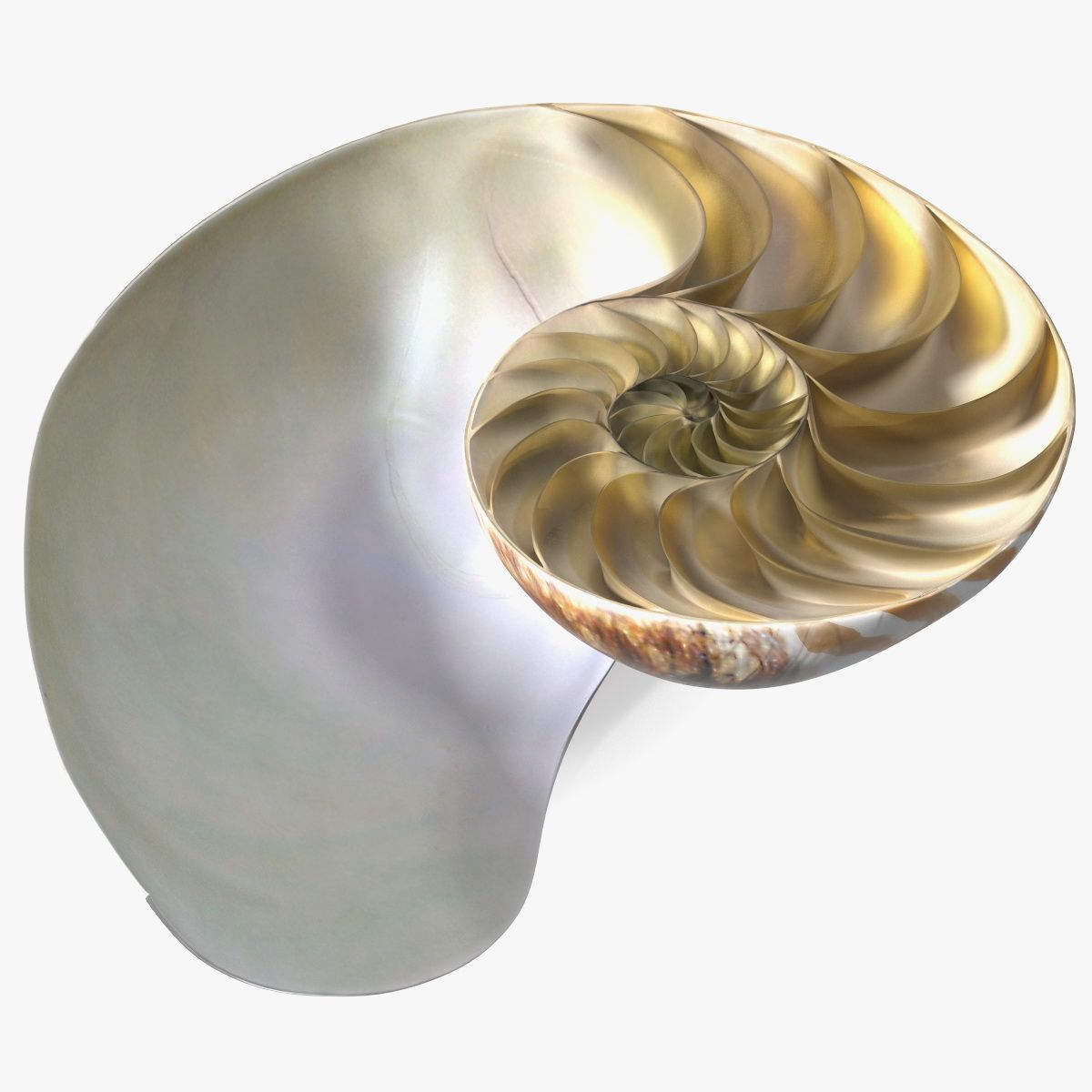The deep blue ocean hides numerous wonders, and among them, the chambered nautilus stands out as a true marvel. This fascinating cephalopod has been swimming in our oceans for hundreds of millions of years, and one of its most captivating features is its intricate shell. Often referred to as “nature’s 3D printers,” these shells are not only aesthetically beautiful but also serve crucial functions for the nautilus. In this article, we will delve into the world of chambered nautilus shells, exploring their anatomy, formation, and the mysteries they hold.
The Design: A Masterpiece of Symmetry and Elegance
The chambered nautilus shell is a true work of art. Its design is a masterpiece of symmetry and elegance, featuring a logarithmic spiral that expands as the nautilus grows. The outer shell is typically pearly white, adorned with brown stripes or spots, creating a visually stunning pattern. What makes these shells even more remarkable is their lightweight yet durable structure, providing protection for the delicate creature residing within.
The Spiral Symphony: The shell’s logarithmic spiral not only adds to its visual appeal but also plays a crucial role in the nautilus’s buoyancy. As the nautilus adds new chambers to its shell throughout its life, the spiral shape helps distribute the weight evenly, allowing the creature to regulate its buoyancy and move effortlessly through the water.
Formation Process: Nature’s 3D Printing
The formation of chambered nautilus shells is akin to nature’s 3D printing process. It all begins when a nautilus hatches from its egg with a tiny, transparent shell. As the nautilus grows, it secretes a gas-filled chamber within the shell, sealing it off and creating a new compartment. This process is repeated throughout the nautilus’s life, with each chamber being slightly larger than the previous one.
Architectural Marvel: The nautilus meticulously controls the size and shape of each chamber, ensuring a perfect logarithmic spiral. This precision is awe-inspiring, considering the nautilus doesn’t have a blueprint or plan for its shell. The architectural marvel of these shells highlights the incredible intelligence ingrained in the nautilus’s genetic code.
The Functionality: More Than Just Aesthetics
While the chambered nautilus shell is undoubtedly a visual spectacle, it serves more than just an aesthetic purpose. It plays a crucial role in the nautilus’s survival, contributing to its buoyancy, protection, and overall adaptability.
Buoyancy and Balance: The chambers in the nautilus shell are filled with gas, primarily nitrogen. By adjusting the gas-to-liquid ratio in these chambers, the nautilus can control its buoyancy, rising or sinking in the water with ease. This ability is vital for the nautilus to navigate different depths in search of food and avoid predators.
Protective Fortress: Beyond buoyancy, the shell acts as a protective fortress for the nautilus. Its hard exterior shields the soft-bodied cephalopod from predators and environmental hazards. As the nautilus grows, it continuously adds new chambers to its shell, ensuring that it always has a suitably sized and secure home.
The Mysteries Unveiled: Scientific and Cultural Significance
Chambered nautilus shells are not just intriguing for their physical beauty; they also hold scientific and cultural significance. Scientists study these shells to unlock the secrets of the nautilus’s life, growth, and evolutionary history. Additionally, in various cultures, the nautilus shell symbolizes beauty, perfection, and the balance of life.
Scientific Exploration: The study of chambered nautilus shells provides valuable insights into the evolutionary processes of cephalopods. By examining the growth patterns and structures of these shells, scientists can piece together the puzzle of the nautilus’s ancient lineage and its adaptations over millions of years.
Cultural Symbolism: The nautilus shell has been revered in different cultures throughout history. Its perfect spiral has often been associated with harmony, balance, and natural beauty. In some societies, the nautilus shell is considered a symbol of perfection, representing the elegance of nature’s design.
Frequently Asked Questions (FAQs)
Q1: Do chambered nautiluses ever outgrow their shells? A1: Yes, chambered nautiluses continuously add new chambers to their shells as they grow. They never outgrow their shells, ensuring a perfect fit throughout their lives.
Q2: Are chambered nautiluses endangered? A2: While chambered nautiluses have existed for hundreds of millions of years, certain species face threats from overharvesting for their shells and habitat destruction. Conservation efforts are crucial to preserving these ancient creatures.
Q3: Can chambered nautiluses live in captivity? A3: Chambered nautiluses have specific habitat requirements that make them challenging to keep in captivity. Maintaining the right conditions, including appropriate water depth and temperature, is essential for their well-being.

